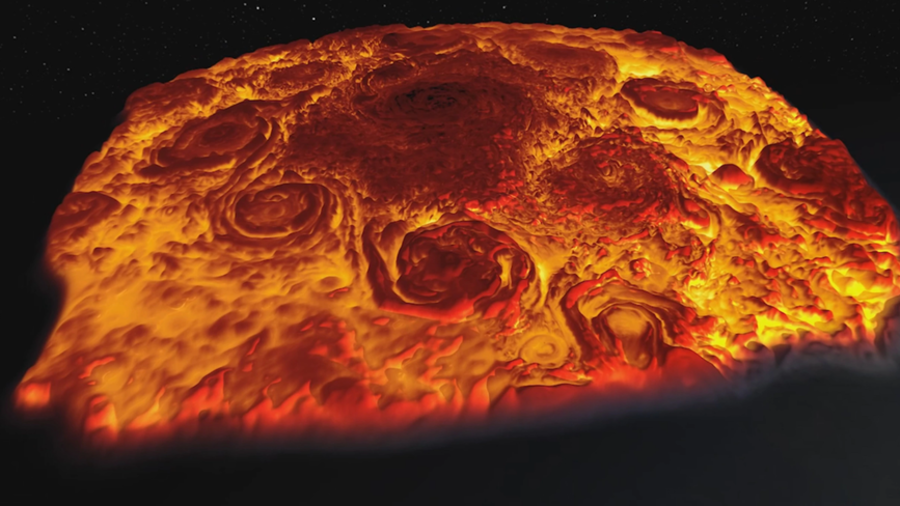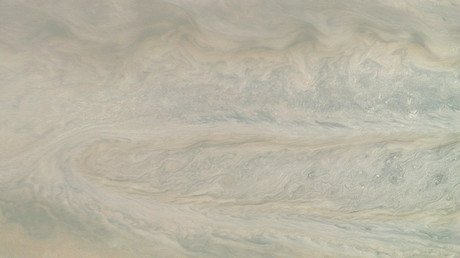3D flyover of Jupiter reveals planet’s menacing cyclones (VIDEOS)

The mesmeric swirling mass atop our solar system's largest planet is laid bare in all its turbulent glory in an incredible 3D flyover 'tour' video from NASA. The imagery offers an intriguing peek beneath Jupiter’s clouds.
The animation shows Jupiter’s north pole and the “engine” powering its magnetic field in never-before-seen and highly-textured detail. The churning surface looks almost menacing in the video which illustrates the polar region’s central storm and the eight cyclones – ranging in diameter from 2,500 to 2,900 miles (4,000 to 4,600 kilometers) – that encircle it.
READ MORE: NASA sends bull & human sperm into space for reproduction study
The 3D tour was built using data collected by the Jovian Infrared Auroral Mapper (JIRAM) instrument aboard NASA’s Juno spacecraft during its fourth flyover of the enormous planet. The infrared cameras measure the atmospheric temperature some 30 to 34 miles from Jupiter’s cloud tops, and offer some insight into the gas giant’s powerful cyclones.
In the animation, the yellow areas represent warmer (or deeper) regions of Jupiter and the darker areas are cooler (or higher up). In the movie the highest area was measured at about 9 Fahrenheit (-13 degrees Celsius) and the lowest at around -117 Fahrenheit (-83 degrees Celsius).
“Before Juno, we could only guess what Jupiter’s poles would look like,” said Alberto Adriani, Juno co-investigator from the Institute for Space Astrophysics and Planetology, Rome.
“Now, with Juno flying over the poles at a close distance, it permits the collection of infrared imagery on Jupiter’s polar weather patterns and its massive cyclones in unprecedented spatial resolution.”
The incredible footage was unveiled by scientists working on NASA’s Juno mission during the European Geosciences Union General Assembly in Vienna, Austria, on Wednesday. Juno has logged more than 200 million km since entering Jupiter’s orbit in 2016. The craft has just one more close flyby to complete before its mission officially concludes in July, however, NASA may extend the mission.
Like this story? Share it with a friend!














